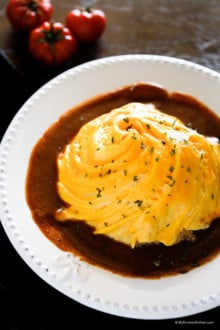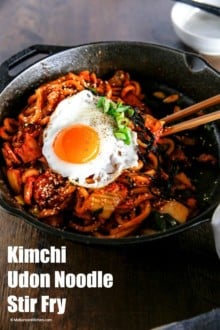The ultimate guide to Japchae—Korea’s beloved glass noodle stir-fry! Discover the most authentic and detailed recipe to create this flavorful classic right in your kitchen.
What is Japchae
Japchae, also known as chapchae (잡채), is a cherished staple of Korean cuisine and one of its most iconic dishes. Celebrated for its unique flavors and vibrant appearance, it holds a special place on the table during festive occasions such as New Year’s Day and the Harvest Festival. Its flavorful and versatile nature, however, also makes it a favorite for regular days.
The word “japchae” translates to “mixed vegetables,” hinting at its origins. When it was first created in the 17th century, Japchae didn’t even include noodles! Over time, the dish evolved, and today, the star ingredient is bouncy, translucent glass noodles made from sweet potatoes. These delightful noodles are combined with a vibrant mix of colorful vegetables, tender, well-seasoned meat, and a flavorful seasoning blend that ties everything together.
Japchae beautifully balances tradition with modern tastes, making it a timeless classic that’s perfect for both festive celebrations and when you’re in the mood for a special treat during the week.
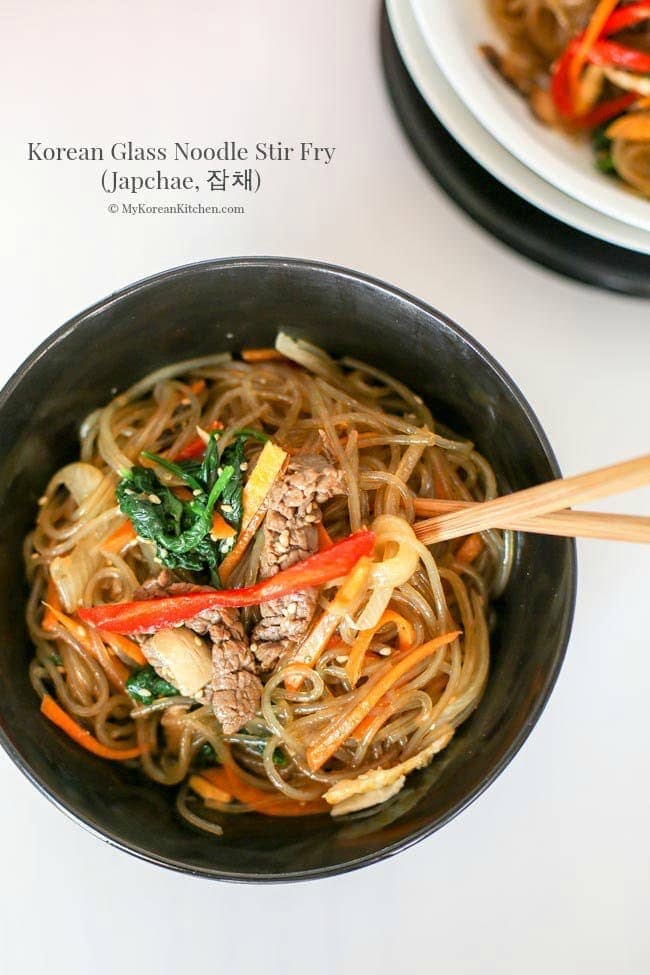
Japchae is typically served as a side dish, but it can also be enjoyed as a main dish when served over a bed of rice (known as Japchae-bap, 잡채밥). In this case, I usually pair it with Korean black bean sauce, just like the way it’s served in Korean-Chinese restaurants. I’ll cover that variation another time.
Preparing Japchae is quite similar to making bibimbap. It typically involves meat and vegetables (unless you’re making a vegetarian version), and each ingredient is individually prepared and cooked.
Some might argue that this separate cooking process is unnecessary. (I hear you—it can be cumbersome!) However, cooking each ingredient separately allows you to enhance its individual flavor, texture, and color. (Trust me, I’ve had my fair share of mediocre Japchae attempts from stir-frying everything together at once.) After all, each ingredient has its own ideal cooking point.
Well-made Japchae should have a perfectly balanced sweet and savory flavor, vegetables with a satisfying crunch (neither too raw nor too soft), and noodles with a delightfully bouncy texture (not mushy).
And today, I’m thrilled to share my well-made Japchae recipe with you! We couldn’t get enough of it, and I hope you enjoy it as much as we did. 🙂
Ingredients for Japchae (6 to 8 servings)
Main
- 250g / 8.8 ounces Korean sweet potato starch noodles (dangmyeon,당면)
- 100g / 3.5 ounces rib eye fillet, cut into strips
- 1 carrots (120g / 4.2 ounces), rinsed, peeled & julienned
- 110g / 3.9 ounces baby spinach, rinsed
- 1/4 red capsicum / bell pepper (50g / 1.8 ounces), rinsed & julienned
- 1/2 yellow onion (105g / 3.7 ounces) – peeled, rinsed & thinly sliced
- 100g / 3.5 ounces fresh shiitake mushroom – cleaned, stems removed & thinly sliced
Spinach Seasoning
- 1/4 tsp fine sea salt
- 1/2 tsp minced garlic
- 1 tsp toasted sesame oil
Beef Marinade
- 1 Tbsp soy sauce
- 1 tsp rice wine (mirin)
- 1/2 tsp minced garlic
- 1/4 tsp ground black pepper
- 1 tsp toasted sesame oil
Noodles & Mushroom Marinade – Mix these in a small bowl
- 4 Tbsp soy sauce
- 1 Tbsp honey
- 1 Tbsp brown sugar
- 1 Tbsp toasted sesame oil
- 1/8 tsp ground black pepper
Finishing Touch
- 1 Tbsp toasted sesame seeds
- 1 Tbsp toasted sesame oil
- (Optional) 1 extra large egg – rinsed, egg white and yolk separated
Other
- cooking oil – I used rice bran oil.
- fine sea salt
- water to boil the spinach and the noodles
* 1 Tbsp = 15ml
** If you’re not sure of the above Korean cooking ingredients, check my essential Korean cooking ingredients list!
How to Make Japchae
1. Place the beef strips into a medium bowl. Add the “beef marinade” and gently mix the sauce into the meat. Cover the bowl with food wrap and set it aside while you’re working on other ingredients.

2. Get the rest of the ingredients ready as shown below.
- Prepare the vegetables as instructed in the “main ingredients” section.
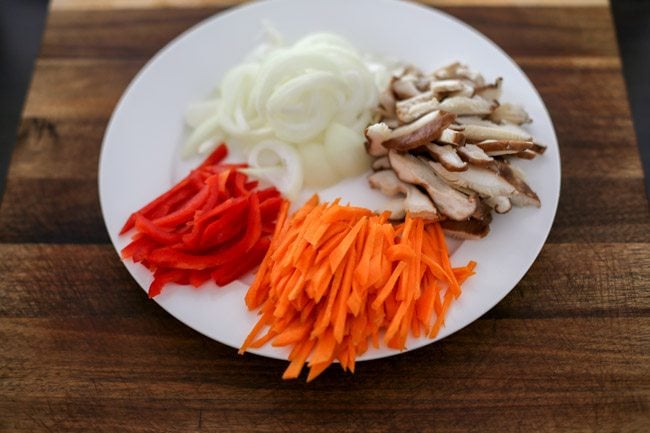
- Put the sliced mushroom into a medium bowl and add 1 Tbsp of “noodles & mushroom marinade” mixture. Mix them well. Set it aside until you cook it (in about 20 mins).
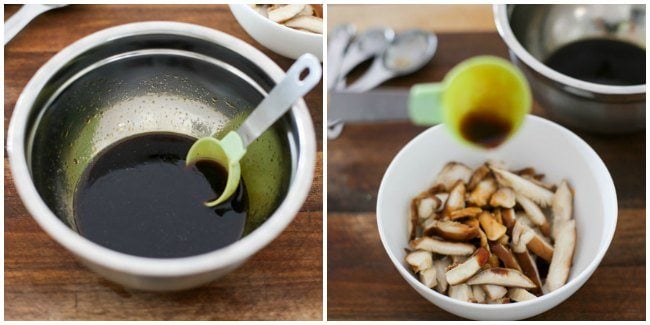
- Blanch the spinach in rolling boiling water (5 to 10 seconds). Drain the water and quickly cool it down by running it under cold tap water. Squeeze the spinach to remove any excess water and put it into a mixing bowl.
Add the “spinach seasoning” and mix them gently and evenly. Put it into a large mixing bowl where we will be adding the rest of the prepared ingredients in later.
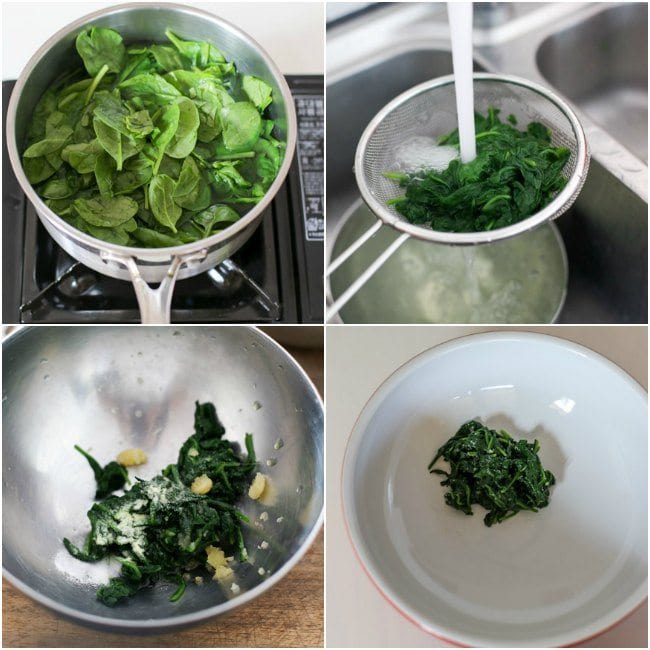
- Boil some water in a large pot. Once the water starts to boil (6 to 8 mins later), add the noodles and boil them for 6 to 7 mins. Drain the water. Rinse in cold water to cool down and let the water drain for 1 to 2 mins.
Cut the noodles with a pair of kitchen scissors a couple of times. (Between 15 to 20 cm / 6 to 8 inches length is good). Move the noodles into a mixing bowl and pour in the rest of the “noodles & mushroom marinade” mixture. Mix them well. Set it aside until you cook it (in about 10 mins).
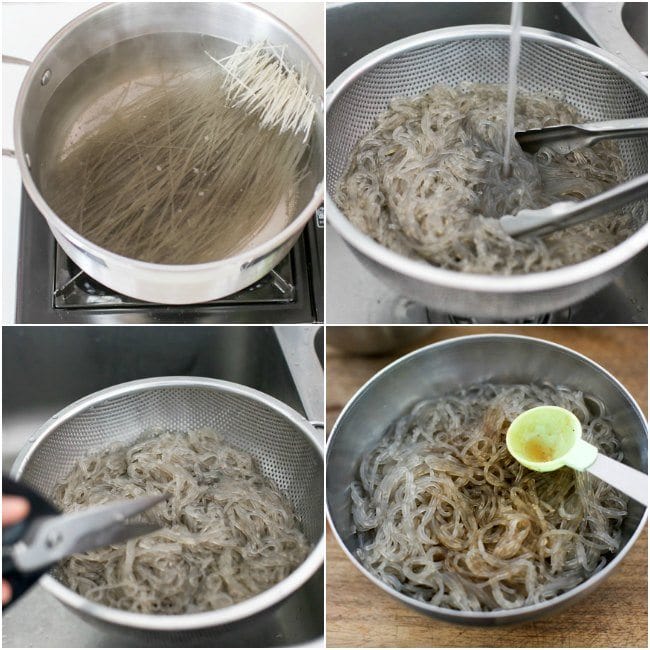
3. Start cooking the prepared ingredients per below. Follow the order if you can. We are cooking lighter color to darker color (to minimize the color transfer and avoid washing up in between) and will be using only one non-stick pan/skillet.
Once each step is completed, move them into the large mixing bowl (except for the first two – egg white and egg yolk), where we will be mixing all ingredients in before serving.
- Beat the egg white with a fork. Add some cooking oil (1 tsp) on a well heated pan and spread it well. Pour the egg white mixture and cook both sides on low heat (1-2 mins). Transfer it onto a clean cutting board and set aside.
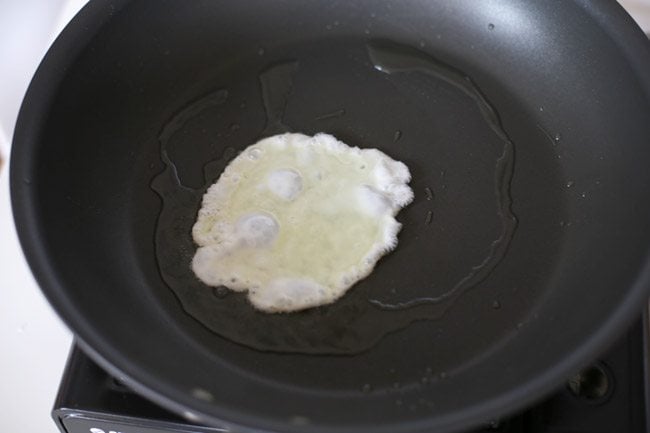
- Beat the egg yolk with a fork. (If necessary, add more cooking oil onto the pan and spread it well.) Pour the egg yolk mixture and cook both sides on low heat (1-2 mins). Transfer it onto a clean cutting board and set aside.

- Add more oil if necessary. Cook the onion with a pinch of salt over low to medium heat until it softens (1-2 mins). Transfer it to the large mixing bowl.
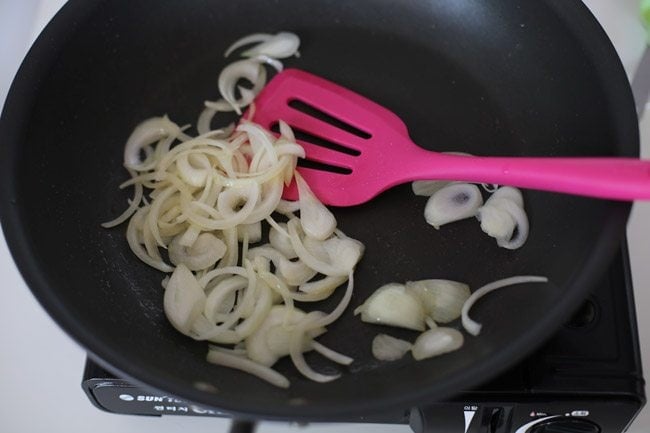
- Add more oil if necessary. Cook the carrots with a pinch of salt over medium heat until it softens (1-2 mins). Transfer it to the large mixing bowl.
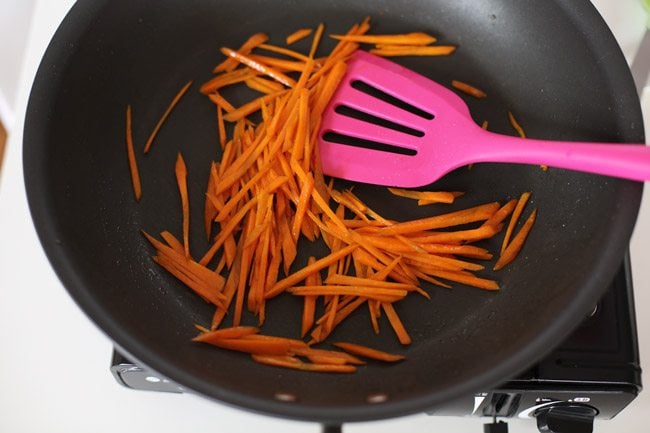
- Add more oil if necessary. Cook the red capsicum with a pinch of salt over low to medium heat until it softens (1-2 mins). Transfer it to the large mixing bowl.

- Add more oil if necessary. Pour in the marinated mushroom (incl. the residue sauce from the bowl) and stir fry until it is cooked (1-2 mins) over low to medium heat. Transfer it to the large mixing bowl.
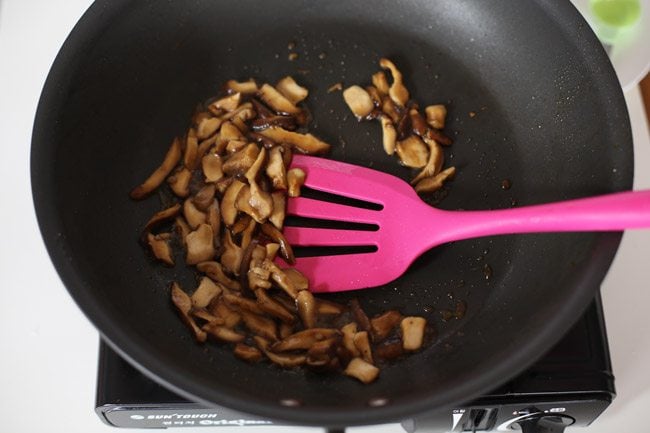
- Add more oil if necessary. Pour in the marinated meat and stir fry until it is cooked (2-3 mins) over medium heat. Transfer it to the large mixing bowl.
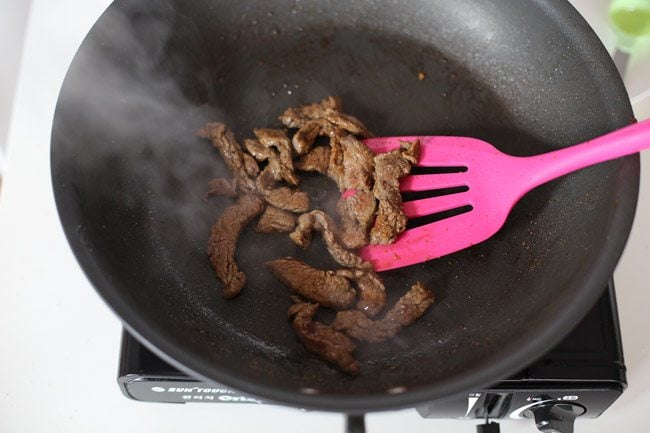
- Add more oil if necessary. Stir fry the marinated noodles until the noodles are well coated with the sauce (2-3 mins) over low to medium heat. Transfer it to the large mixing bowl.
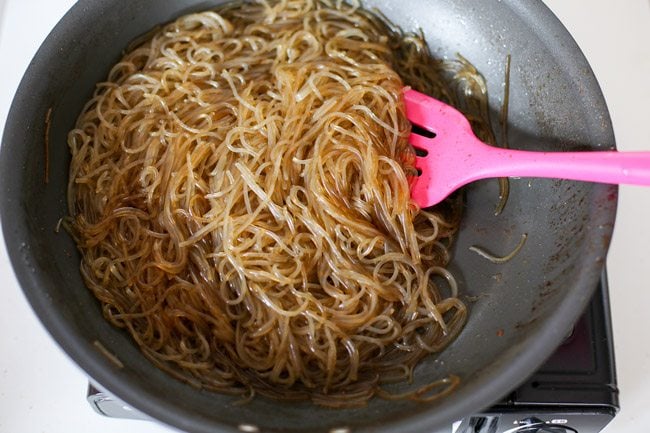
4. Thinly slice the egg white and egg yolk like match sticks. Add them into the large mixing bowl as used above.
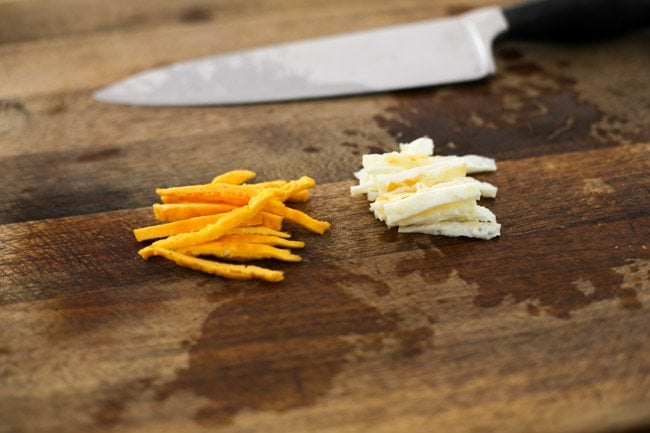
5. Add the final “finishing touch” ingredients—sesame oil and sesame seeds—to the large mixing bowl. Gently toss everything together using your hands to evenly coat the noodles and vegetables with the fragrant oil and seeds. Be careful, as the noodles might still be hot. If needed, start by mixing with a salad server and switch to your hands once everything has cooled slightly.
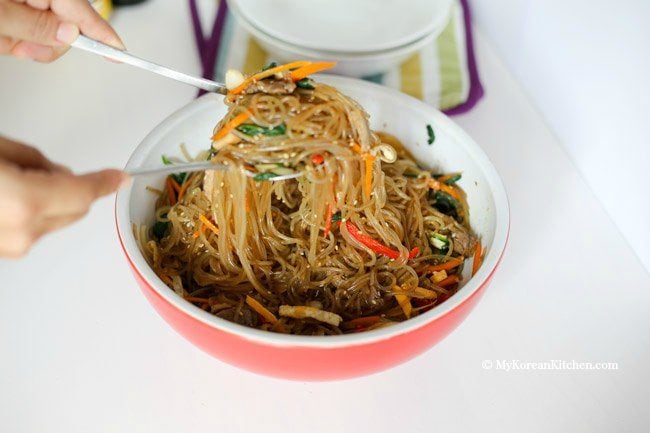
6. Serve with a bowl of Korean rice and a variety of classic Korean side dishes for a truly authentic meal!
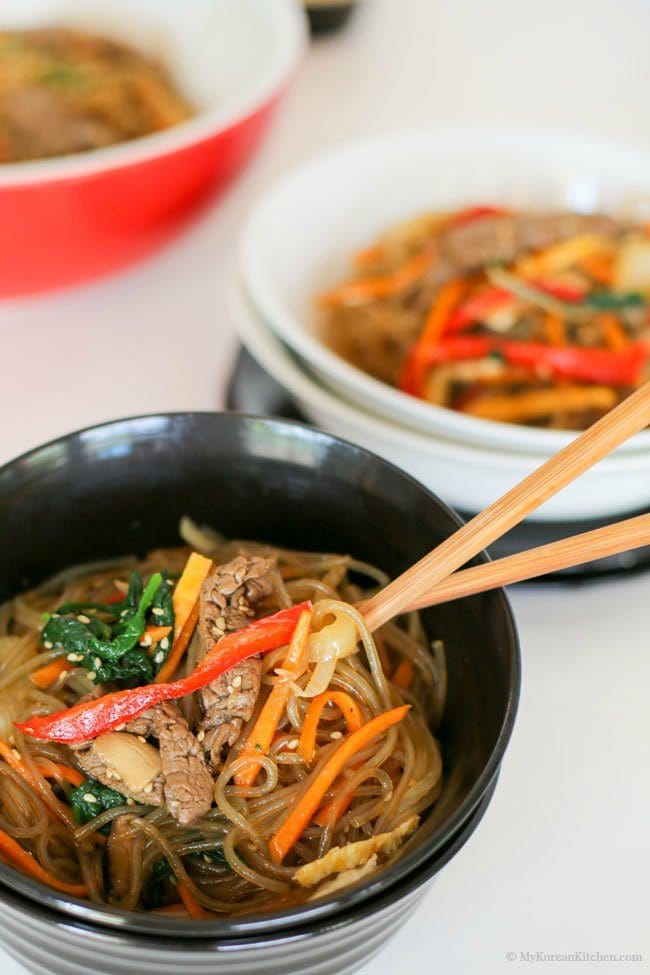
Tips
- If you buy dried shiitake mushrooms instead of fresh mushroom, you will have to soak them in water for a few hours before using them. If you can’t find shiitake mushrooms, oyster mushrooms can be a good substitute.
- I used pre-cut noodles (자른 당면) that are 30-40 cm (12 – 16 inches) long individually. I still cut a bit with my scissors after boiling them but a lot less than if I was using more traditional noodles. In general, these pre-cut noodles are much easier to cook with, so I highly recommend it.
- The best way to save time in preparing and cooking for Japchae is to familiarise yourself with the instructions above and multi-task (e.g. boil two pots of water for spinach and glass noodles at the same time).
- Japchae can be served hot or cold. You can also microwave it to reheat when necessary.
- Japchae can be stored in the fridge for 1-2 days in an air tight container. It can be stored for a bit longer but the noodles don’t look as good by then.
How I Make It: Step-by-Step Recipe Video
Discover More! Explore our site for authentic Korean recipes—from mastering the art of perfect Korean BBQ at home to creating delicious banchan (Korean side dishes) and other tasty, easy Korean dishes. Let us inspire your next meal!

Authentic Japchae Recipe: Korean Glass Noodle Stir Fry
Ingredients
MAIN
- 250 g Korean sweet potato starch noodles (8.8 ounces, dangmyeon)
- 100 g rib eye fillet (3.5 ounces), cut into strips
- 1 carrot (120g / 4.2 ounces), rinsed, peeled & julienned
- 110 g baby spinach (3.9 ounces), rinsed
- 1/4 red capsicum (bell pepper, 50g), rinsed & julienned
- 1/2 yellow onion (105g), peeled, rinsed, & thinly sliced
- 100 g fresh shiitake mushroom , cleaned, stems removed & thinly sliced
SPINACH SEASONING
- 1/4 tsp fine sea salt
- 1/2 tsp minced garlic
- 1 tsp toasted sesame oil
BEEF MARINADE
NOODLES & MUSHROOM MARINADE – MIX THESE IN A SMALL BOWL
- 4 Tbsp soy sauce
- 1 Tbsp honey
- 1 Tbsp brown sugar
- 1 Tbsp toasted sesame oil
- 1/8 tsp ground black pepper
FINISHING TOUCH
- 1 Tbsp toasted sesame seeds
- 1 Tbsp toasted sesame oil
- 1 egg (extra large, Optional) rinsed, egg white and yolk separated
OTHER
- cooking oil (I used rice bran oil)
- fine sea salt
- water to boil the spinach and the noodles
Instructions
- Place the beef strips into a medium bowl. Add the "beef marinade" and gently mix the sauce into the meat. Cover the bowl with food wrap and set it aside while you're working on other ingredients.
- Get the rest of the ingredients ready as shown below.- Prepare the vegetables as instructed in the “main ingredients” section.- Put the sliced mushroom into a medium bowl and add 1 Tbsp of “noodles & mushroom marinade” mixture. Mix them well. Set it aside until you cook it (in about 20 mins).- Blanch the spinach in rolling boiling water (5 to 10 seconds). Drain the water and quickly cool it down by running it under cold tap water. Squeeze the spinach to remove any excess water and put it into a mixing bowl. Add the "spinach seasoning" and mix them gently and evenly. Put it into a large mixing bowl where we will be adding the rest of prepared ingredients in later.- Boil some water in a large pot. Once the water starts to boil (6 to 8 mins later), add the noodles and boil them for 6 to 7 mins. Drain the water. Rinse in cold water to cool down and let the water drain for 1 to 2 mins.Cut the noodles with a pair of kitchen scissors a couple of times. (Between 15 to 20 cm / 6 to 8 inches length is good). Move the noodles into a mixing bowl and pour in the rest of the "noodles & mushroom marinade" mixture. Mix them well. Set it aside until you cook it (in about 10 mins).
- Start cooking the prepared ingredients per below. Follow the order if you can. We are cooking lighter color to darker color (to minimize the color transfer and avoid washing up in between) and will be using only one non-stick pan/skillet.Once each step is completed, move them into the large mixing bowl (except for the first two – egg white and egg yolk), where we will be mixing all ingredients in before serving.- Beat the egg white with a fork. Add some cooking oil (1 tsp) on a well heated pan and spread it well. Pour the egg white mixture and cook both sides on low heat (1-2 mins). Transfer it onto a clean cutting board and set aside.- Beat the egg yolk with a fork. (If necessary, add more cooking oil onto the pan and spread it well.) Pour the egg yolk mixture and cook both sides on low heat (1-2 mins). Transfer it onto a clean cutting board and set aside.- Add more oil if necessary. Cook the onion with a pinch of salt over low to medium heat until it softens (1-2 mins). Transfer it to the large mixing bowl.- Add more oil if necessary. Cook the carrots with a pinch of salt over medium heat until it softens (1-2 mins). Transfer it to the large mixing bowl.- Add more oil if necessary. Cook the red capsicum with a pinch of salt over low to medium heat until it softens (1-2 mins). Transfer it to the large mixing bowl.- Add more oil if necessary. Pour in the marinated mushroom (incl. the residue sauce from the bowl) and stir fry until it is cooked (1-2 mins) over low to medium heat. Transfer it to the large mixing bowl.- Add more oil if necessary. Pour in the marinated meat and stir fry until it is cooked (2-3 mins) over medium heat. Transfer it to the large mixing bowl.- Add more oil if necessary. Stir fry the marinated noodles until the noodles are well coated with the sauce (2-3 mins) over low to medium heat. Transfer it to the large mixing bowl.
- Thinly slice the egg white and egg yolk like match sticks. Add them into the large mixing bowl as used above.
- Add the final "finishing touch" ingredients—sesame oil and sesame seeds—to the large mixing bowl. Gently toss everything together using your hands to evenly coat the noodles and vegetables with the fragrant oil and seeds. Be careful, as the noodles might still be hot. If needed, start by mixing with a salad server and switch to your hands once everything has cooled slightly.
- Serve with a bowl of Korean rice and a variety of classic Korean side dishes for a truly authentic meal!
Notes
Nutrition Info (per serving)
The nutrition information shown is an estimate provided by an online nutrition calculator. It should not be considered a substitute for a professional nutritionist’s advice.


